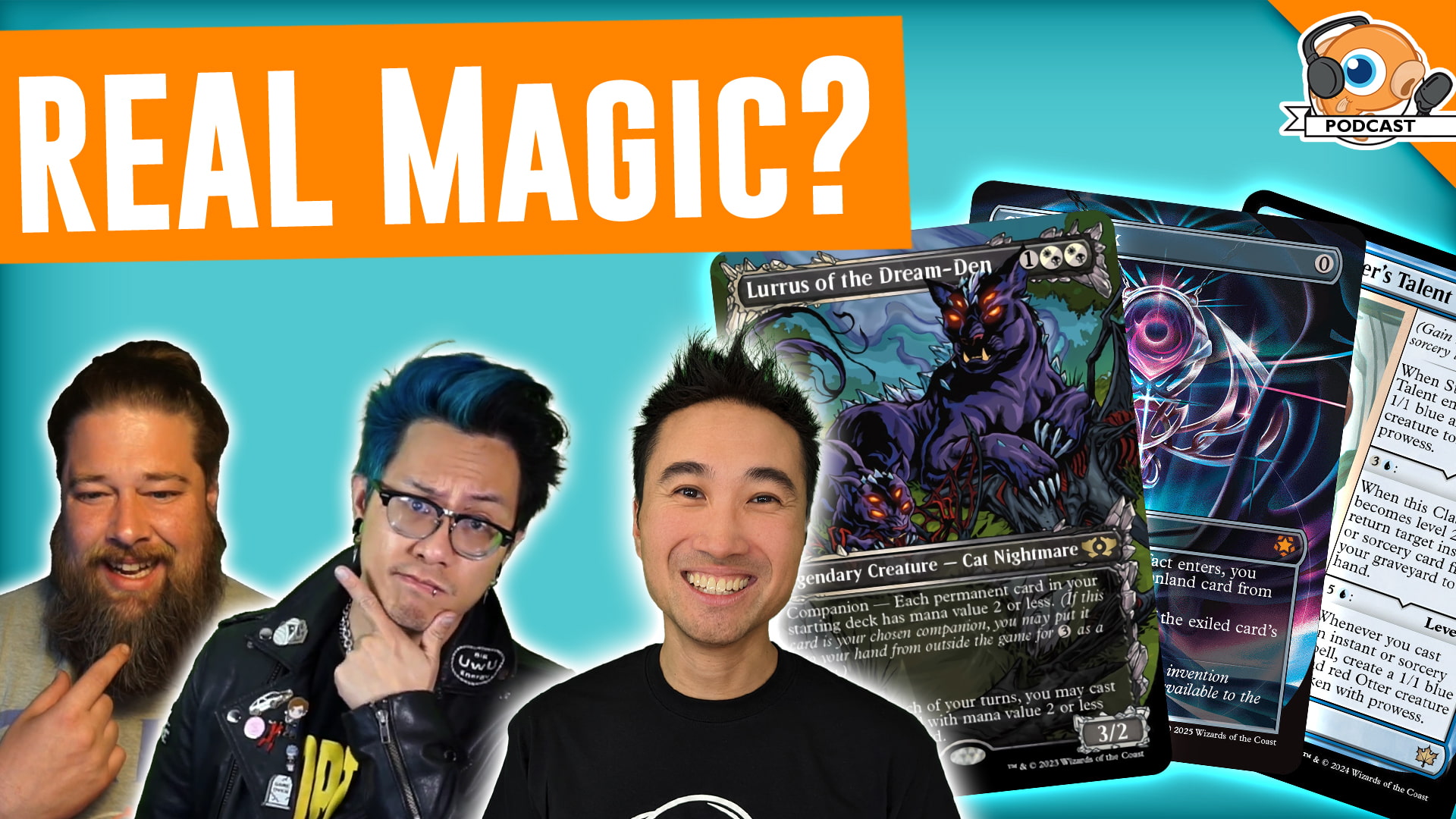Sticking to your MTGFinance Plan
Hey everyone, Chaz here. This is my first article here on MTGGoldfish and I want to thank MTGGoldfish for giving me a chance to discuss MTGFinance with you all and contributing to the community. I want to start off this article with a quote for how I approach MTGFinance:
Wealth stays with us a little moment if at all: only our characters are steadfast, not our gold.
This is the basis of my dialogue with everyone in this article. We'll discuss how this quote can help you all in defining how you approach MTGFinance and how to carry yourself going forward. I will be going over different aspects of a financier and how you can categorize yourself and perhaps re-invent yourself in this market. Certainly one can fall into different categories, but I think being steadfast and creating a plan for yourself can save yourself, well, from yourself. It can also protect your investments, prevent you from chasing a bad deal, and holding your finger off the mouse button before hitting that “Purchase” button. All these things I go over on a daily basis and each time I feel myself faltering, I re-organize my thoughts and to prevent chasing speculation purchases.
Categorizing Financiers
“The ‘penny stocks’ guy”: This is the financier that doesn't’t deal with “high-end” cards. This is the person who is looking for the lowest buy-in point possible. The lower, the better. He sets a goal for not going over a 'X dollar buy in point. No matter how good an opportunity a speculation presents, if it’s over that limit, it’s a no go.
“The Collection buyer”: This is the financier that everyone in the area knows. Buying up collections and driving around the tri-state area scooping up collections and sorting them. Seeking out %’s of profit through careful sorting and careful selling, whether it be cash, or buy-listing. Not dealing with the buying or selling of “stocks” in the singles market. Only seeking to skim through collections, and offering a price that can be turned for a profit.
“The Buylist-er”: This financier uses tools from various websites to give himself the best out of selling cards. She uses these services to create extensive lists and bypasses the typical way to selling of her goods. This financier is very diligent in keeping track and checking these buylists on a daily basis to always get a certain return on her purchases. “Take one put two back” bulk rare boxes are a common place here.
“The Highlander”: This financier speculates or purchases regardless of the buy-in points. He will usually take any profits even on the highest end of the spectrum. Buying a Black Lotus doesn't phase this financier while there is a profit up there on cloud 9.
“The Grinder”: This financier is usually the one using MTGFinance as a means to an end. This is his livelihood, and always trying to make a quota to pay for the expenses in his life. Grinding any sort of profit and using any of the tools available to achieve profit margins.
These are the categories I have come up with over the course of my time exposed to this side of the game. Now you can all certainly disagree with me, and I am absolutely sure some of you will. Whether you agree or not, I think it's invaluable to identify yourself and how you use your time. I will also say again that of course financiers can fall into multiple categories. There is no “one way” to do this, and one can certainly draw from every tool around them. Just keep in mind that at the end of the day *your time* is the most important variable. Speaking for myself, I certainly would not have the time to hustle around the state buying up collections, or have the funds to purchase big ticket speculation targets.
This also doesn’t mean that certain fundamentals of financing are lost on any of these other categories. One is always going to try to find the lowest buy-in point possible, I’m not arguing that. I’m arguing the fact that one should consider a plan, and stick to that plan *most* of the time. I have certainly had my fair share of terrible speculation targets. These days I have minimized that by really conditioning myself not always to jump in on the hype train (sometimes inadvertently) created by others.



What would I consider myself? Well first and foremost,"The ‘penny stocks’ Guy." Though that doesn’t mean I haven’t used a buylist before, or any other tools around me. I have just set a plan for myself by setting a dollar amount cap for what I can speculate on.
Making a Plan
So, we’re at the point now where have you identified which financier you are. Now it’s time to execute a plan that works for you. Perhaps some of these questions are the things that novice and even veteran financiers can ask themselves. I have coined the term "AAIIWW" for these questions.
Am I utilizing my time in the best way possible?
Am I utilizing every tool around me? (Social media/Websites/etc.)
Is there a specific store nearby that I can visit to purchase cards?
Is the way I’m tracking my purchases and selling successful?
What’s the best way to minimize expenses? (Shipping/fees)
What do I want to accomplish with MTGFinance?
This last question is the one I wanted to touch upon. While this seems like an intuitive thing to ask, sometimes the most obvious question is the most important. Since I am here asking you to make a plan, I feel this question is vital. In approaching MTGFinance, one has to think about what they want to do with the profits. Your goals can vary greatly to the financier next to you. Do you want MTGFinance to *just* fund this great hobby we all share, or do you feel you need to make some side money to pay for expenses in your life. Whichever is the case, these will drastically alter your method and purchasing habits when looking to turn a profit. It certainly makes me much more conservative at times, even when eyeing a card at an extremely low buy-in.
I also want to say that each one of these questions are very important; so important, that each of them could warrant an entire article on their own. While I'm posing them in a more general sense, I would like you to take the time to write them down and answer them for yourself. I'm also very open to talking about these questions, or about how I specifically answer these as an MTG Financer.
So, I’ve made a plan, now what?
Well, this is certainly the hardest part, yes? I would say that besides the questions and insights I post below, also do your due diligence. This entails looking at the various outlets of information, and checking the stocks of the day to monitor certain cards, and take note on which cards are trending and more specifically why. Below are some things you can do in between your daily studies when you need a break from MTGFinance.
Perhaps you have a bunch of cards you have not sorted yet? Go sort them.
There are a bunch of cards I do not know what to do with. Buylist them/Sell them
These are just some of the questions you should be asking yourself. There will not be a card that’s spiking every single day. So, don’t be lazy, and take some time to sort through your collection and think about the best way to get rid of certain cards.
I would say also to take this time and take it a step further. Perhaps really sizing down your collection and liquidate cards that aren't a “must” keep. I certainly am in the process of doing so. Sometimes a clean slate is exactly what a financier needs to re-focus. Create a new spreadsheet and really be diligent tracking your purchases and your profits. If you do this already, good on you; continue to do so.
Conclusion
After reading this article, I hope some clarity comes to you fellow financiers. Sometimes it’s frustrating not getting in on profitable speculation cards, but keep in mind there’s always another one around the corner. If you set yourself to sticking to your plan and identify what you can do within your means, then you don’t have to worry about watching out for every spiking card. Being patient and steadfast can really minimize poor purchases, and increase your profits over time.
Thanks for reading,
Chaz
@BoltSnapBolt
Check out the BoltSnapBolt Community! http://boltsnapboltgaming.weebly.com/
Want a place to discuss and learn MTGFinance? Check out the Facebook Group here:
https://www.facebook.com/groups/mtgfinance/
It’s a great place to learn and discuss MTGFinance in a positive and constructive manner.













